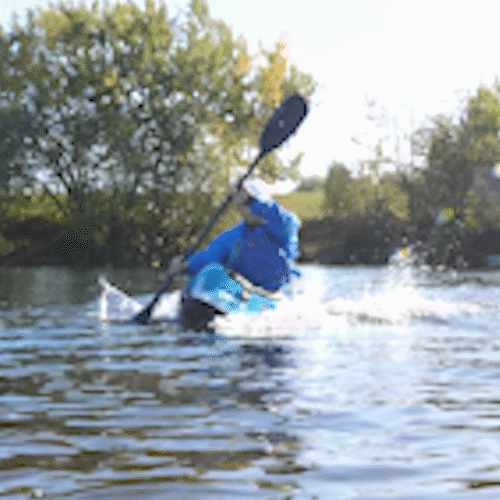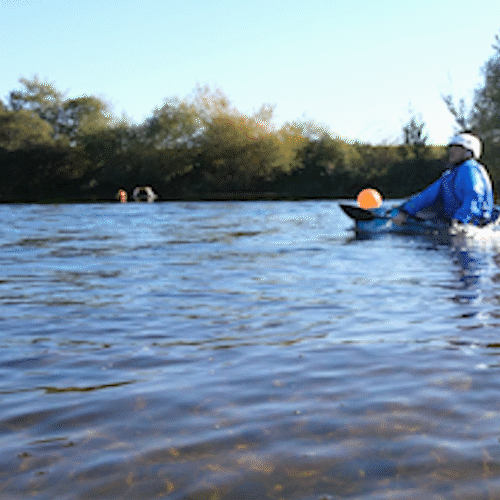We have all been there and some of us will still be there. There are so many nuances to kayaking that can take a while to pick up on. Below are my top five kayaking mistakes and how to fix them.

The wobbles
When a kayaker wobbles from edge to edge rather than keeping the kayak flat or holding the kayak on one edge. The biggest problem with this is that it is a complete giveaway to the outside world that you don’t really know what you are doing, not cool. Imagine someone driving down a straight road but they are constantly pulling the steering wheel left or right, making unnecessary micro adjustments. It doesn’t necessarily inspire confidence in their ability. In kayaking, the wobbles kill your flat water speed, make it more likely for you to spin out and make it much more likely that you will accidentally drop the upstream edge – we all know what happens next – CAPSIZE!

Paddle angle
The paddle is the ultimate piece of equipment to control your kayak. Whilst a good kayaker can use a single stroke to do multiple things, primarily there are two ways to use the paddle, steering and powering. When the paddle is of a low angle and horizontal, most of the force is generated laterally, this is really useful for turning the kayak but not that useful for paddling forwards. Most beginners you see will have their angle low and you will watch them sweeping their nose left to right on flat water, this makes them much slower and increases the chance spinning out. When the paddle is vertical most of the force generated is pulling you forwards and there is little lateral motion, this makes for a much more powerful forward stroke and an easier time keeping your kayak straight. It also looks cooler, which as always, is most important.
Stroke length
Generally speaking, the best kayaker on the water is the one taking the fewest strokes to get to where they want to go. Taking fewer strokes means that you conserve energy and have your paddle engaged in the water for a longer total time. Imagine your paddle as a car steering wheel, any time you have your paddle out of the water is the equivalent to taking your hands off the steering wheel. Not ideal.
Rushing
The best athletes make it look as if time is standing still for them – as if they have all the time in the world to do what they want to do and go about it almost lazily. Beginners always look frantic, especially when eddying out. Take your time, be confident and look for river features to use.
Not using river features
I like to imagine the river as a Mario Kart track. There are spots you can hit that will enable you to go faster and there are spots that will slow you down. It’s one thing to spot them but it’s another thing entirely to adjust your speed and direction and use them. Take your time, spot the river feature that is best going to help you get to where you want to go and use it!
Bonus tips
Look where you want to go and you’ll end up there, look where you don’t want to go and you’ll end up there.
Use your head – last
Perhaps the most counterintuitive thing is the kayak roll. Your thought process might go like this:
- I am upside down and my head is underwater.
- I need to breathe.
- I should lift my head above the water to breathe.
Makes sense in theory, right? – Wrong, in practice you might be able to sneak a breath but you will not be able to roll the kayak upright and you will soon be underwater again.
Your head is heavy, really heavy, and the longer you can keep it supported in the water, the easier it will be to roll back up again and then breathe. Stay calm, keep your head down and flick with your hips / knees.
See you on the water, Bren